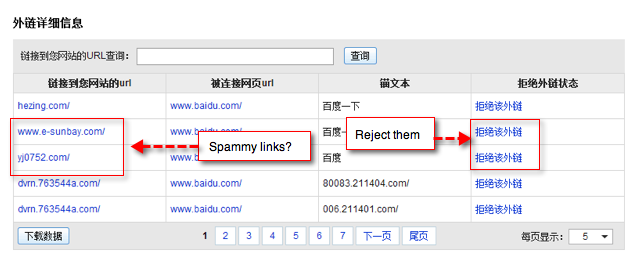How To Use The Baidu Link Disavow Tool

Earlier this month, Baidu updated its “Money Plant” Algorithm, which is aimed at penalizing websites with low quality, spammy links.
In order to escape the wrath of Baidu’s new algorithm changes, bad links need to be dealt with. The best course of action is always to have the links removed. However, Baidu, like Google, understands that this is not always an option. That’s how the Baidu Link Disavow came to launch. Webmasters can use the tool to reject spammy links in Baidu Webmaster Tools, sending the message to Baidu that they do not trust these links, were not responsible for them, or that they are starting to clean themselves up.
Baidu provides both a scalpel and a hatchet for you to deal with low-quality links to your site. You can either disavow all links pointing to a specific part of your site (the hatchet approach), or you can disavow individual links to your site one-by-one (the scalpel approach).
If webmasters already know which part of their website is receiving spammy links, (often the case for website owners doing link building themselves), they can simply type in the website domain, subdomain, subdirectory, or page to reject all links pointing to them. Caution is needed, however – you’ll want to be 100% sure that all links to be rejected are truly linkspam, as the process is not reversible. Any good links that were incorrectly or accidentally disavowed will not be reclaimable once it’s done.

If you’re not sure which part of your web property is receiving the bad links, or if the links are spread evenly throughout your site, the scalpel approach is probably your best option. Start by navigating to the Baidu Inbound Link Discovery in your Baidu Webmaster Tools console to check all your inbound links. Here, you can assess each link individually and reject any that you find suspicious.

However there is a downside by choosing the scalpel option – there’s a maximum number of links you can reject at a time. Each month, you’ll only be able to reject 500 links. So if you’ve really gotten yourself in trouble with a large number of spammy backlinks, you’ll either need to throw out many good links along with the bad ones using the first method, or take the slow approach, slowly removing individual links 500 a month.
The reason for Baidu implementing the limit should be obvious – they want to make it slightly painful when you’re begging Baidu for penitence. While the search engine may be willing to forgive and forget, they do not want to be too lenient as to encourage bad behavior. The consequence of having to throw away good links with the bad for major offenders may be just enough of a deterrent for linkspammers.
The Baidu Link Disavow Tool is a good remedy after your website has been diagnosed by Baidu as sick. But similar to how Google’s Link Disavow Tool works, you won’t be able to gain Baidu’s trust again overnight, even if you start rejecting those links right after penalty takes effect. The best solution is always to build links smartly and cautiously, avoiding obviously spammy techniques.
Take precaution by monitoring your inbound links’ quality. Pay attention to signals like inbound links getting suddenly got de-indexed by Baidu, or BaiduRank of linking websites suddenly dropping. These are clear warning signs that Baidu doesn’t trust these links, so take action on the links before your websites are affected. Use Dragon Metrics’ link management tools to track inbound links’ trust and indexation status. You’ll get an email alert as soon as any major changes happen to your backlink portfolio, so you can take action before Baidu’s “Money Plant” penalty can hit you.